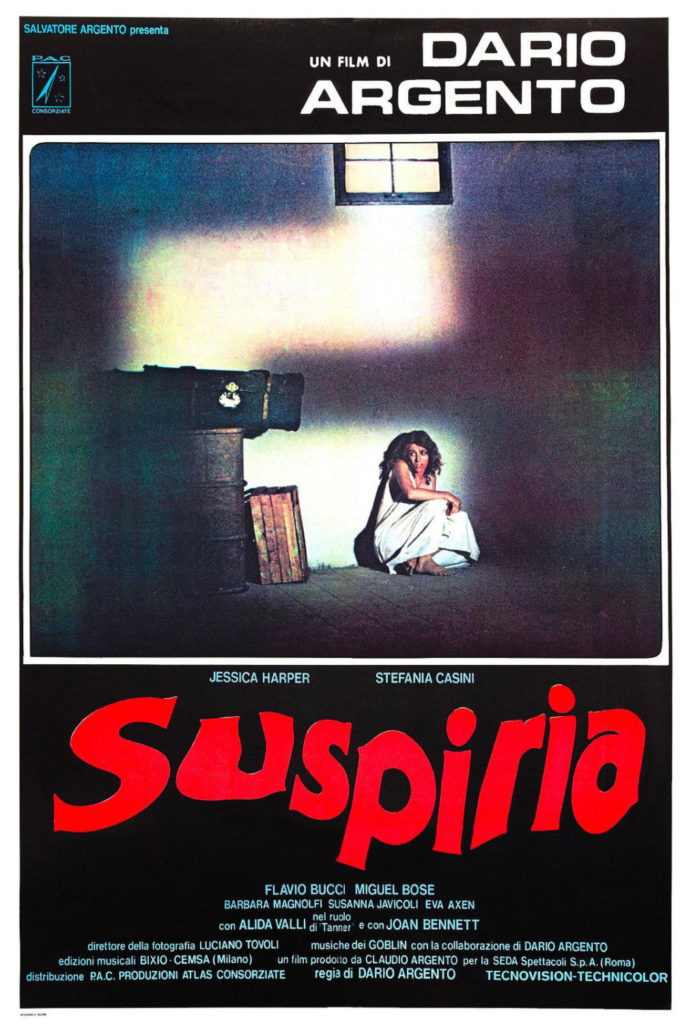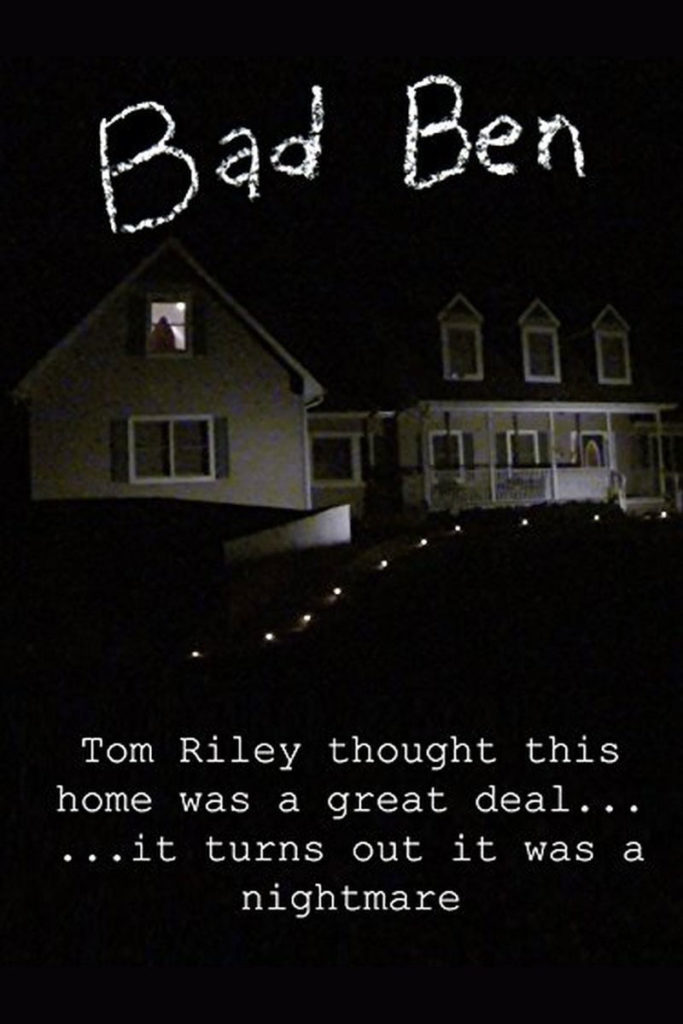 A viewer would hard-pressed to find a more beautifully shot, atmospheric horror film than Dario Argento’s Suspiria. Argento’s, and cinematographer Luciano Tovoli’s, vivid production has become legend among horror fans, and for good reason. The film exists within a reality all its own, shifting back and forth between dreamlike and nightmarish, soft and menacing, as the situation requires. No study of horror films, and film in general, is complete without seeing this classic.
A viewer would hard-pressed to find a more beautifully shot, atmospheric horror film than Dario Argento’s Suspiria. Argento’s, and cinematographer Luciano Tovoli’s, vivid production has become legend among horror fans, and for good reason. The film exists within a reality all its own, shifting back and forth between dreamlike and nightmarish, soft and menacing, as the situation requires. No study of horror films, and film in general, is complete without seeing this classic.
From 1977, Suspiria stars Jessica Harper as Suzy Bannion, a dance student who has been invited to study at the prestigious Tanz Dance Academy in Freiburg, Germany. Strange happenings begin immediately upon Suzy’s arrival at the academy (played on the exterior by a real location called The Whale House). She is greeted by a student who is fleeing into the night, and is herself turned away at the door, despite a driving, soaking rain.
Argento didn’t waste any time, packing this first sequence with some of the atmosphere that would come to define the movie. The Whale House is a gaudily painted relic, and the onscreen action is accompanied by an iconic soundtrack by an Italian band called Goblin. Goblin’s music is Mike Oldfield-esque, in that it’s evocative of the opening notes of Tubular Bells, which was used to effect in The Exorcist. Argento liked Goblin’s work for the film so much that he overuses it, pounding the same hook over and over again into the audience’s brains. Continue reading “October Horrorshow: Suspiria”

 What a glorious age in which we live. Sure, there are problems. American democracy is eating itself alive, with Russia giving us an unwanted assist. Capitalism no longer promises the kind of wage gains necessary to sustain a middle class over the long haul. Technology companies are being hacked, and our personal information is being stolen on a seemingly daily basis. That’s actually less disturbing than it could be, because those same technology companies have shown they don’t have our best interests at heart, anyway. No one can be trusted, whether it’s in our political lives or our technological lives. But at least in this new age, one man can write, film, star in, edit, and release his very own movie. It may not be a good movie, but all the gatekeepers that had been in place to prevent free expression in the art of film are now gone.
What a glorious age in which we live. Sure, there are problems. American democracy is eating itself alive, with Russia giving us an unwanted assist. Capitalism no longer promises the kind of wage gains necessary to sustain a middle class over the long haul. Technology companies are being hacked, and our personal information is being stolen on a seemingly daily basis. That’s actually less disturbing than it could be, because those same technology companies have shown they don’t have our best interests at heart, anyway. No one can be trusted, whether it’s in our political lives or our technological lives. But at least in this new age, one man can write, film, star in, edit, and release his very own movie. It may not be a good movie, but all the gatekeepers that had been in place to prevent free expression in the art of film are now gone. A viewer would hard-pressed to find a more beautifully shot, atmospheric horror film than Dario Argento’s Suspiria. Argento’s, and cinematographer Luciano Tovoli’s, vivid production has become legend among horror fans, and for good reason. The film exists within a reality all its own, shifting back and forth between dreamlike and nightmarish, soft and menacing, as the situation requires. No study of horror films, and film in general, is complete without seeing this classic.
A viewer would hard-pressed to find a more beautifully shot, atmospheric horror film than Dario Argento’s Suspiria. Argento’s, and cinematographer Luciano Tovoli’s, vivid production has become legend among horror fans, and for good reason. The film exists within a reality all its own, shifting back and forth between dreamlike and nightmarish, soft and menacing, as the situation requires. No study of horror films, and film in general, is complete without seeing this classic.